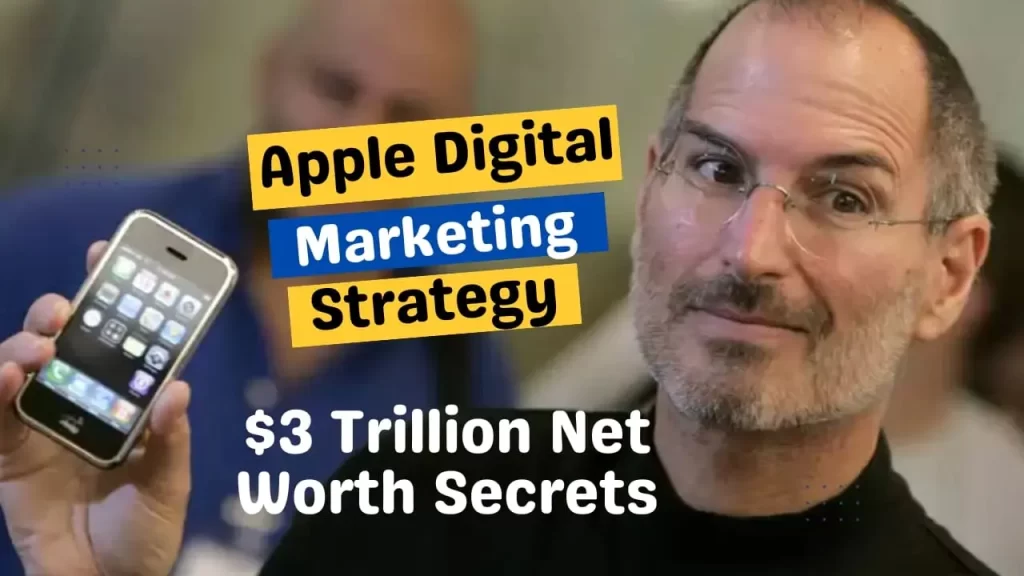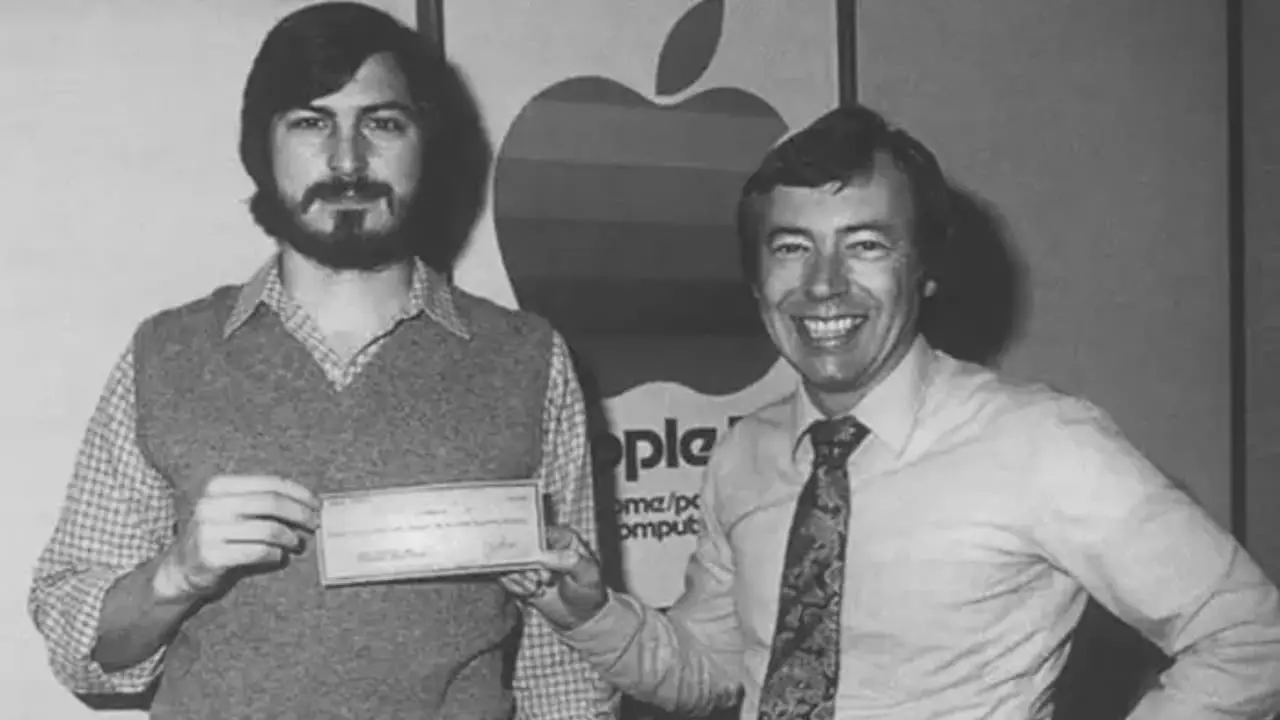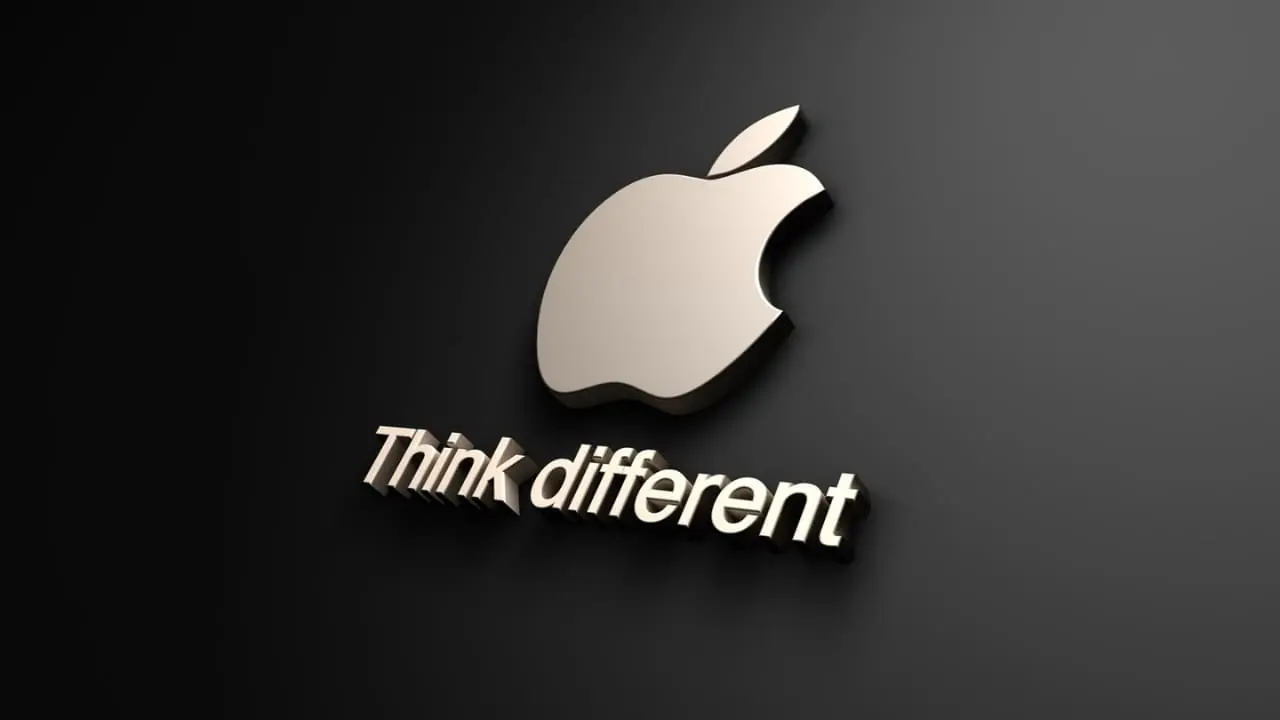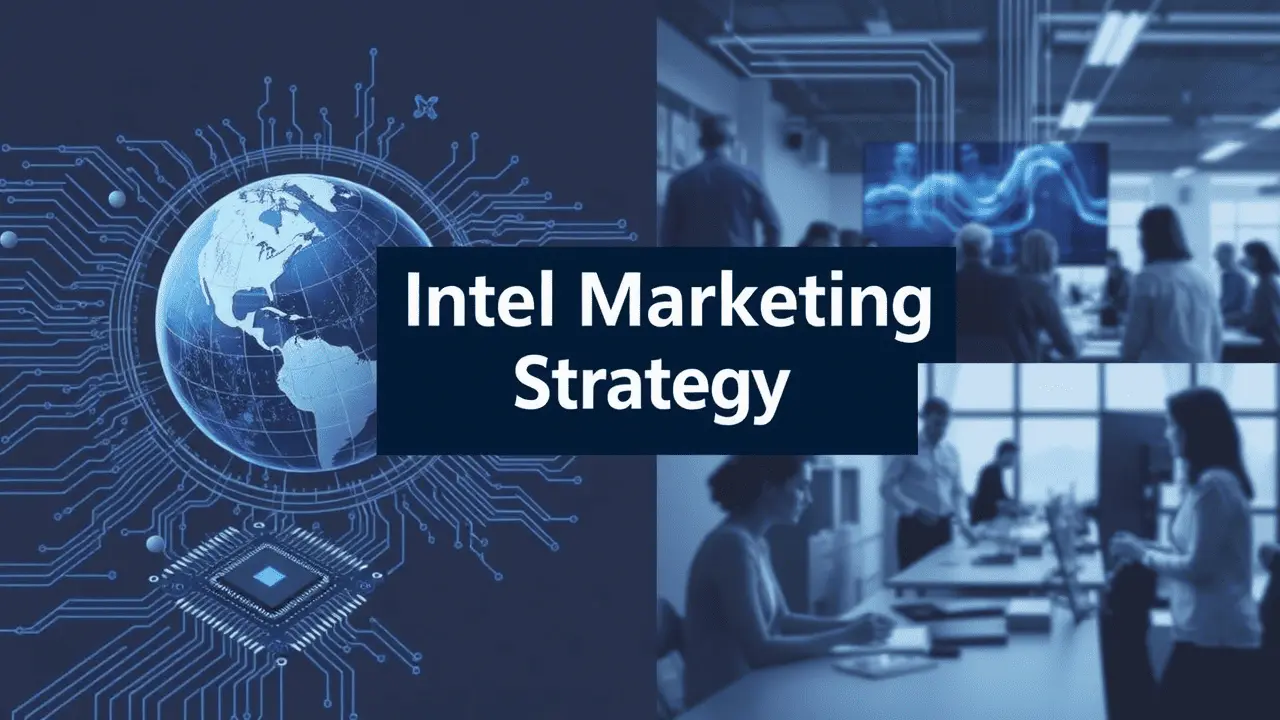
So there is a joke we should start this blog with: an iPhone and an Android phone were arguing about whose features were better. Apple said, “At least I don’t have to worry about crashing during a software update!”
Now, let’s dive into Apple marketing strategy. When we talk about the Iphone marketing strategy, we dive into the core of what makes this tech giant not only successful but also iconic. Apple has a rich history of transforming technology, a reputation for creating premium products, and a genius for marketing them. From the very first Apple computer built in a garage to today’s sleek iPhones that millions of people can’t live without, Apple’s journey is a lesson in brilliant strategy and smart execution.
In this blog, we’ll explore the Apple marketing strategy, focusing on how the brand continues to stay ahead of its competitors. We’ll compare Apple with other phone brands in terms of quality, price, software, and security while also diving into what makes Apple’s marketing different. We’ll take a close look at the iPhone marketing strategy, compare it with Samsung’s approach, and discuss the unique ways Apple markets its products. Along the way, we’ll give live examples to keep things entertaining and interactive. So let’s begin this journey of knowledge.
A Brief History of Apple: From Garage to Global Domination

Apple started like many tech giants—small and scrappy. In 1976, Steve Jobs, Steve Wozniak, and Ronald Wayne founded Apple in Jobs’ garage in Cupertino, California. Their first product was the Apple I, a single-board computer that laid the groundwork for personal computing as we know it today. But Apple didn’t truly become a global phenomenon until the late 1990s and early 2000s, with the introduction of the iMac, iPod, and, of course, the iPhone. In the late 1900s, we could not hear phrases like Apple company marketing strategy. But now we do.
In 1984, Apple introduced the Macintosh, the first commercially successful personal computer to feature a graphical user interface. However, the company faced numerous challenges in the late 1980s and early 1990s, leading to Jobs’ departure. It wasn’t until he returned in 1997 that Apple began its remarkable turnaround. The launch of the iMac in 1998, with its colorful design and user-friendly interface, signaled a new era for Apple.
Before we begin to truly understand Apple company marketing strategy, here is a fun fact. Steve Jobs was a master storyteller. His famous “One More Thing” line during Apple product announcements became an iconic part of the Apple marketing strategy, leaving audiences in suspense for the big reveal. This ability to create buzz and anticipation is one of the most powerful Apple company marketing techniques.
Tired of not getting a JOB?
Diploma Course in Digital Marketing
With 100% Job Guarantee
Learn effective marketing strategies & maximize your income.
Apple Marketing Strategy: A Winning Formula That Revolutionized Tech
Apple vs. Other Phone Brands: Quality, Price, Software, and Security
Before we look into the details of Apple marketing strategy, let’s understand how Apple compares with other major phone brands, especially when it comes to quality, price, software, and security.
Quality:
Apple has built its brand around premium quality. From the smooth finish of its devices to the Retina displays and high-end cameras, Apple products are meticulously designed. The materials used—such as aerospace-grade aluminum and ceramic—add to the sense of luxury and are a part of Apple company marketing strategy.
On the other hand, brands like Samsung and Xiaomi have also upped their game in terms of quality. Samsung’s flagship Galaxy models, for instance, offer sleek designs and impressive displays. However, Apple’s uniformity across devices ensures a consistent experience, which is often missing in brands with a wider variety of models.
Price:
When it comes to Apple marketing strategy, one of the biggest debates surrounding Apple is its pricing. Apple devices are undeniably expensive. An iPhone can cost double or triple the price of many Android devices. This is where Apple’s marketing genius comes in—people are willing to pay a premium because Apple has positioned its products as a lifestyle choice, not just tech gadgets.
Samsung offers a broader range of prices, from budget-friendly models to high-end devices like the Galaxy S and Z series. However, Apple’s premium pricing strategy creates an aura of exclusivity that many competitors find difficult to replicate.
Software:
Apple’s iOS and Google’s Android are two of the most widely used mobile operating systems, and the Apple company marketing strategy that sets Apple apart is the seamless integration between hardware and software. Every update and every feature is crafted specifically for Apple devices, making iOS one of the smoothest and most user-friendly systems out there.
In contrast, Android’s open-source system allows for more customization but can be less coordinated, which gives a loophole in favor of Apple marketing strategy. For instance, Samsung phones run on a customized version of Android, meaning updates and app support aren’t always as streamlined as iOS.
Security:
If there’s one area where Apple Marketing Strategy consistently leads, it’s security. Apple’s closed ecosystem and its focus on user privacy give it an advancement. Features like Face ID, encryption, and regular software updates ensure that iPhones are among the most secure smartphones available.
Meanwhile, Android devices, while improving, are more vulnerable to security breaches due to the open nature of the operating system.
The Apple Marketing Strategy: What Makes It Different?
So, what is it that The Apple marketing strategy does differently from its competitors? The key lies in its attention to detail and its ability to create desire.
Here are some of the unique aspects of Apple’s approach:
1. Product Launch Events:
Apple doesn’t just launch products—it makes a spectacle of it. The annual Apple Event is a masterclass in marketing, drawing millions of live viewers from around the globe. These events create a sense of excitement and build-up anticipation, making the product seem like a must-have before it’s even released.
Live Example:
Remember the iPhone 12 launch? The pandemic forced Apple to go virtual, yet the excitement was notable. Tim Cook and the team rolled out stunning visuals, testimonials, and a clever marketing narrative. They made you feel like the iPhone 12 was an extension of your own life.
2. Simplicity and Minimalism:
Look at any Apple product or advertisement, and you’ll notice that simplicity is the key to Apple marketing strategy. Apple’s tagline “Think Different” reflects not just its approach to product design but also its marketing. No complicated slang, no overwhelming feature list—just a focus on how the product can change your life.
Fun Comparison:
While Samsung’s ads often delve into technical specifications, Apple’s ads typically feature everyday scenarios that resonate with the average user—think of the “Shot on iPhone” campaign that showcases stunning photography taken by ordinary users. This elevates the user experience to something extraordinary.
3. Exclusive Retail Experience:
Apple’s retail stores are another key part of its marketing strategy. The Apple Store marketing strategy centers on creating an immersive customer experience. Apple stores aren’t just places to buy products—they’re designed to let customers interact with the technology, talk to knowledgeable staff, and walk out with a sense of ownership and loyalty to the brand.
In-Store Experience:
Have you noticed the unique Apple Marketing Strategy when you walk into an Apple Store, you’re greeted by open spaces, friendly staff, and opportunities to touch and test products. This environment encourages exploration and connection, allowing potential buyers to envision how Apple products fit into their lives.
4. Community Engagement:
Apple doesn’t just sell products; it builds communities. Through initiatives like the Apple Developer Program, the company fosters an ecosystem where developers and users can flourish together. This sense of community adds another layer to Apple marketing strategy and encourages brand loyalty.
Example:
Apple hosts events like WWDC (Worldwide Developers Conference), where developers get a first look at new technologies and can interact with Apple engineers. This not only builds excitement around new releases but also reinforces Apple’s commitment to its developer community.
Tired of not getting a JOB?
Diploma Course in Digital Marketing
With 100% Job Guarantee
Learn effective marketing strategies & maximize your income.
The iPhone Marketing Strategy: A Benchmark in Mobile Marketing
When we discuss the iPhone marketing strategy, it’s important to recognize that Apple doesn’t just sell a phone—it sells a lifestyle. The iPhone is more than just a smartphone; it’s a status symbol, a must-have accessory for millions of people around the world. But how exactly does Apple make this happen?
1. Focus on Innovation:
Apple markets the iPhone as a state-of-the-art technology. Each iPhone release is framed as a leap forward, even when the changes are incremental. Apple’s marketing team ensures that every new feature—no matter how small—feels like a game changer.
For example, the introduction of Face ID in the iPhone X was marketed as revolutionary, even though biometric security
already existed in other phones.
2. Emotional Appeal:
Apple understands that people buy based on emotions. In their ads, you’ll rarely see the iPhone being sold with a focus on technical specs. Instead, you’ll see people capturing precious memories, FaceTiming loved ones, or using the iPhone to pursue creative passions. It’s all about making an emotional connection with the user.
Live Example:
Consider the “Don’t Blink” ad for the iPhone 7. The ad highlights not just the phone’s capabilities but the life moments people cherish. By evoking emotions, Apple makes the iPhone more than just a device; it becomes part of life’s important memories.
3. Celebrity endorsements and partnerships:
Apple is selective about celebrity endorsements, but when it does collaborate, it does so strategically. Whether it’s featuring celebrities in their ads or providing iPhones for Hollywood movies, Apple ensures that the iPhone is seen in the hands of trendsetters.
Example:
Think of how often you see iPhones in popular TV shows and movies. This subtle yet effective integration into pop culture reinforces the idea that owning an iPhone is synonymous with being part of a trendy and elite circle.
4. User-generated Content:
Apple encourages users to create content using their products, and they often showcase this content in their marketing. The “Shot on iPhone” campaign is a perfect example. It highlights stunning photos and videos taken by everyday users, bracing the idea that anyone can be a photographer with an iPhone in hand.
5. Interactive Element:
Next time you use your iPhone, try snapping a few pictures of your daily life. You might just end up in an Apple ad. Share your best shots with the hashtag ShotoniPhone, and who knows? You could inspire someone to join the Apple family.

The Apple Store Marketing Strategy: Creating a Unique Experience
When we look at the Apple Store marketing strategy, it becomes obvious that Apple has mastered the art of retail. The design, the layout, the customer interaction—everything is accurately planned to boost the user experience. Such as:
1. Architectural Design:
Apple Stores are known for their stunning architectural designs. Whether it’s the iconic glass cube at the Fifth Avenue store in New York City or the serene aesthetics of the Apple Park Visitor Center in Cupertino, every detail is crafted to create an inviting atmosphere.
Interactive Touchpoints:
When you walk into an Apple Store, you’re greeted with openness, allowing you to freely explore products. The layout encourages you to interact with devices, ask questions, and learn more about how they fit into your lifestyle.
2. Personalization:
Apple employs knowledgeable staff, known as “Geniuses,” who provide personalized support. This one-on-one interaction allows customers to feel valued and understood, further deepening their connection with the brand.
3. Workshops and Events:
Apple Stores regularly host workshops and events to educate customers about their products. These sessions encourage users to learn how to maximize their devices and foster a sense of community among Apple enthusiasts, and that is an important part of the strong Apple company marketing strategy.
Example:
Workshops on photography, coding, or music creation attract people of all ages and skill levels, promoting a sense of community while simultaneously enhancing the customer experience.
Tired of not getting a JOB?
Diploma Course in Digital Marketing
With 100% Job Guarantee
Learn effective marketing strategies & maximize your income.
Apple Marketing Techniques: The Key to Success
The success of Apple’s marketing can be attributed to several clever techniques that set it apart from competitors.
1. FOMO (Fear of Missing Out):
Apple cleverly creates a sense of urgency around its product launches. The hype builds through teasers and countdowns, making people feel they need to get their hands on the latest iPhone before it sells out.
2. Consistent Branding:
Apple’s branding is immediately recognizable. The sleek logo, the minimalist packaging, and the iconic advertising style all contribute to a consistent brand identity that resonates with consumers.
3. Word-of-mouth marketing:
Apple relies heavily on word-of-mouth marketing. When you create quality products and exceptional experiences, your customers become your best salespeople. People love to share their positive experiences with friends and family, which is invaluable.
Samsung vs. Apple Marketing Strategy: A Closer Look
Now that we’ve explored the Apple marketing strategy, let’s see where it stands against its closest competitor: Samsung. Both companies are titans in the smartphone market, but their marketing strategies differ significantly.
1. Product differentiation:
While Apple focuses on a few high-end products with premium pricing, Samsung offers a diverse lineup, catering to various market segments. Samsung’s strategy is to provide a phone for everyone, from budget models to high-end Galaxy devices. This allows Samsung to capture a broader market share, which is an exclusive part of Apple company marketing strategy.
2. Ad Messaging:
Samsung’s advertising often highlights technical superiority and innovation. For example, their ads showcase features like advanced camera capabilities, stylus integration, and other hardware specifications. In contrast, Apple’s ads focus on lifestyle, creativity, and user experience.
Live Example:
Samsung’s “The Next Big Thing” campaign positioned its Galaxy devices as superior alternatives to the iPhone, showcasing features like larger screens and more versatile camera systems.
An now Apple’s response? Crafting stories around the everyday use of its devices, making them relatable and desirable.
3. Pricing Strategy:
As mentioned earlier, Apple’s premium pricing creates a perception of luxury and exclusivity. Samsung, on the other hand, offers a broader pricing spectrum. This allows them to attract budget-conscious consumers while still providing high-end options for those willing to spend.
4. Community and brand loyalty:
While Samsung has a dedicated fan base, Apple’s community engagement is unparalleled. The company has built a strong culture around its brand, where customers feel like they belong to an exclusive club. Samsung’s approach is more product-focused, lacking the emotional connection Apple has cultivated.
Conclusion: The Apple Marketing Strategy- A Lesson in Excellence

As we’ve explored throughout this blog, the Apple marketing strategy is a remarkable blend of innovation, storytelling, and community engagement. By focusing on creating an emotional connection with its customers, Apple has positioned itself not just as a tech company but as a lifestyle brand.
In contrast, while Samsung has its strengths, including a wider product range and competitive pricing, it often lacks the emotional resonance that Apple delivers.
Whether it’s the anticipation of a new product launch, the immersive experience at an Apple Store, or the captivating storytelling in its ads, Apple has mastered the art of marketing.
As you develop your own marketing strategies, remember the lessons learned from Apple: it’s not just about selling a product; it’s about creating an experience, building community, and gaining loyalty.
By implementing these strategies, you too can carve a niche for your brand in a crowded marketplace.













